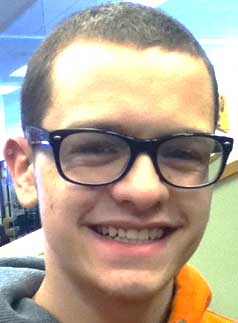Oct. 15, 2014
By Alexandria Zamecnik
Imagine if every time you had to use the restroom, you felt fear over which bathroom you would choose, the male or the female. This is a reality transgender students may face on a daily basis.
To solve the restroom problem for UW-W students, Whitewater Student Government passed the Gender Inclusive Restroom Implementation on Oct. 13 with a vote of 18 to zero.
The implementation states there is a need to recognize LGBT student issues and concerns and gender-inclusive restrooms are a real need for UW-Whitewater.
With the passing of the implementation, all single-use restrooms within UW-Whitewater will be updated with correct signage and be properly and clearly marked.

“We’re talking about something that is a human process, going to the bathroom,” said James Sheets, president of IMPACT. “Why should someone have to be qualified to use a specific toilet?”
A survey was conducted during the summer of 2014 to determine how many bathrooms on campus were available for gender-neutral signage, according to Sean Van Aacken a graduate assistant for the PB Poorman Pride Resource Center.
“After a survey was done this summer, it was recognized that 52 bathrooms on campus are available for the signage and only 10 actually have that signage up,” Van Aacken said.
Van Aacken served as the president of a current inactive organization called B.R.I.D.G.E or Being Real In Discussing Gender Equity.
“This is a very important issue for the students that I come in contact with on a daily basis,” Van Aacken said. “We have a conversation about this two weeks ago about the gender-specific bathrooms. They are very outraged about the timeframe when this is being implemented.”
The next step in the implementation of gender-inclusive restrooms is the signature from Chancellor Richard Telfer.
Author of the legislation and Whitewater Student Government Student Affairs Director Robert Emmett said he has received word that Chancellor Telfer is on board with the implementation.
“In all honesty, I am hoping it (implementation) is done this semester,” Emmett said. “It’s a very simple change, it requires putting new signage in.”
Sheets said although this is a positive step in becoming an accepting university, more can always be done.
“There are points where we’ve come a long way, such as with gender-inclusive housing, rallying behind hate crimes, and other things – however there are many different things that can still be improved,” Sheets said. “You can walk around campus and find things almost everywhere that might not hinder an individual based on an identity, but it could be interpreted as such.”

